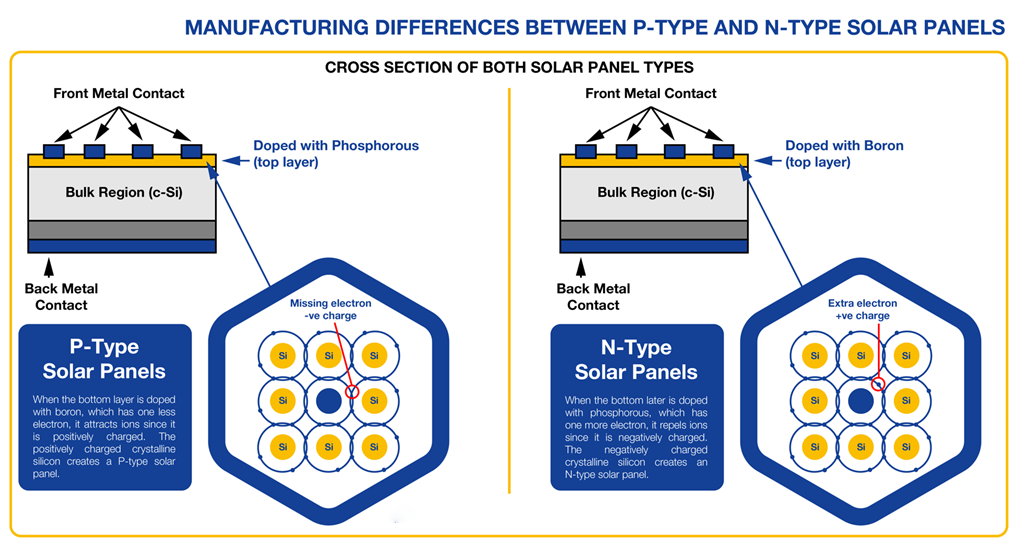N-Type Panels Four Facts You Need To Know
Five fast facts to bring you across all things N-type.
FACT #1: N-type solar cells were developed before P-type
The first solar cell was developed in 1954 – and it was in fact an N-type cell. So why did P-types become so popular?
When solar PV technology was starting out, most of it was being used by space agencies. In space, P-type cells proved to be more resistant to radiation damage than N-types. Hence, more focus and resources were put on P-type cell development, leading to their dominance in today's market.
FACT #2: N-type cells are more efficient than P-type
One of the main differences in the engineering of N-type panels vs P-type panels is their 'doping’. Doping refers to the addition of chemicals to the crystalline silicon to promote power production.
An N-type solar cell is doped with phosphorus, which has one more electron than silicon, making the cell negatively charged (hence the 'N' in N-type).
A P-type cell is doped with boron, which has one less electron than silicon, making the cell positively charged (the 'P' in P-type).
When boron is exposed to light and oxygen, it causes Light Induced Degradation (LID). This happens as soon as solar panels are installed and decreases anywhere between 1% and 3% depending on the brand of the panel.
N-type panels don't use boron and therefore aren't affected by LID. It means better efficiency and improves the useful life of the panel.
FACT #3: N-type cells are more expensive than P-type – however this is expected to change
The downside to N-type panels in today's market is cost. They are more expensive to make and therefore more expensive to buy. With more focus and resources on P-type development, they quickly became more cost effective to produce for manufacturers and cheaper to purchase for end users. Investment into N-types was left behind.
FACT #4: N-type are projected to take over P-type in market share by 2024/25
Industry estimates suggest that N-type panels will be the solar industry's dominant technology by 2024/25 as engineering and manufacturing processes evolve and costs come down.
For a simple explanation of the manufacturing differences between the N-type and the P-type, check out our infographic:
